| Index | ![[Next]](../../../images/next-red.gif) |
What is Stormwater?
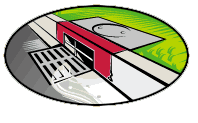 |
| Image: Courtesy of City of Long Beach, CA |
Evapo-transpiration and uptake by plants account for the remaining percentage of precipitation. The precipitation that falls on the land drains from the higher areas over and through the soil and eventually reaches rivers, streams, lakes or the ocean.
But, when natural conditions change due to development and land use, this water cycle becomes altered. As the land becomes more covered with impervious surfaces, more of the precipitation runs over the land, carrying with it pollutants from the pavements to the waterways. In areas where there is development, less than 15% of the runoff makes it into the soil and over 55% of the precipitation runs off!
|
The amount of impervious surfaces in the watershed is one factor in determining the amount of pollutants in our waterbodies. When impervious coverage is 10% or less of a watershed the water quality is very good. When impervious cover is between 10 - 25% of the watershed the water quality is impacted and deteriorating and over 25% coverage in the watershed results in badly deteriorated surface water quality in the watershed streams and lakes. |
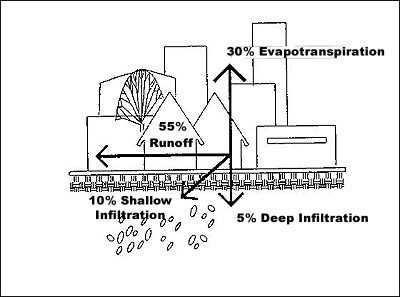 |
| Water Cycle with 75%-100% impervious surfaces. Image: Courtesy of ANJEC |
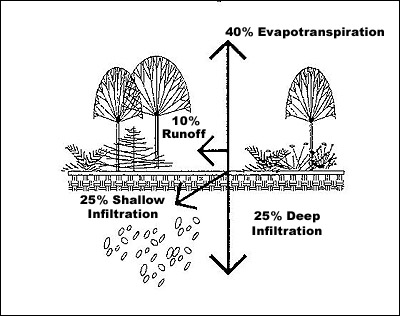 |
| Water Cycle with natural groundcover. Image: Courtesy of ANJEC |
Types of NPS Pollution
Non-point source pollution has no specific source but is caused by a variety of pollutants that are present in stormwater runoff. These include:
- Nutrients
- Pathogens
- Sediment
- Toxic Contaminants
- Debris
- Thermal Stress
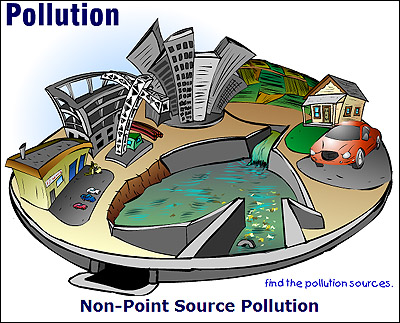 |
| Pollution. Image: Courtesy of County of Honolulu Department of Environmental Services |
Why Care About Stormwater?
As water runoff travels across the land surfaces, it picks up pollutants that can be health risks to humans and cause serious damage to the water ecosystem. These include oil and grease, chemicals, nutrients, metals and bacteria. Over 60% of existing water quality problems are the result of non-point source pollution linked to stormwater runoff.
Because the Federal Government says so...
The U.S. Environmental Protection Agency (EPA) has identified nonpoint source (NPS) pollution as one of the most serious threats to water quality - stormwater being a major component. Under the National Pollutant Discharge Elimination System (NPDES) EPA controls both stormwater and sewer overflow discharges. NPDES provides guidance to municipalities, state and federal permitting authorities on how to meet stormwater pollution control goals.
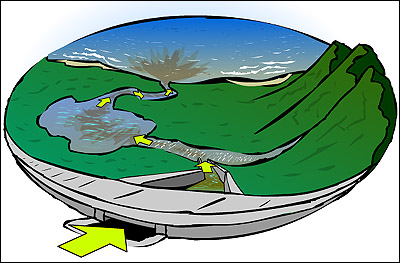 |
| Stormwater travels to the sea. Image: Courtesy of New Jersey Department of Environmental Protection |
|
Phase I Under Phase I permits are required for stormwater discharges from:
Phase II
For more information on the NPDES program please visit the EPA Web site (http://cfpub.epa.gov/npdes/stormwater/swphases.cfm). |
Because the State Government says so...
Stormwater Management is not only a federal program, it is a NJ Department of Environmental Protection (NJ DEP) program as well. States were required to adopt the municipal stormwater rules by March of 2003. Because of the size of the program for NJ, innovative ways of permitting are being utilized to streamline the process and lower the costs of this environmental regulation.
It is important to note that New Jersey's Rules differ in some aspects from EPA's Phase II stormwater rules.
The NJ DEP has been working with a Stormwater Permitting Advisory group which has closely assisted the DEP in developing their policies.
There are 4 components to the Stormwater Management Rules:
- Statewide requirements
- Nonstructural SWM Strategies
- Groundwater Recharge
- Quality Control
- Municipal Stormwater Planning
- Regional Stormwater Management Planning
- Protections for Special Water Resources
To read more about NJ Stormwater Management program, please visit the NJ DEP stormwater Web site ( http://www.njstormwater.org).
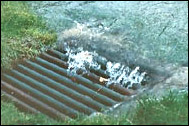 |
| Stormwater drain. Image: Courtesy NJ DEP Division Of Watershed |
NJ DEP Stormwater Management Rules
Stormwater Management for New Development
- Flood Control - same as existing, must reduce peak flow of 2,10 and 100 year storm to 50%, 75% and 80% of preexisting condition
- Quality - Must decrease post-development total suspended solids load by 80%
- Infiltration- Must recharge 100% of the volume recharged prior to the site's development, provisions included for redevelopment.
Stormwater Management for Municipalities, Highways and Public Complexes
Under Phase II General Permits for Stormwater Management must be obtained by:
- Large Municipalities (Tier A) = population > 10,000
- Rural Municipalities (Tier B) = population < 10,000
- Public Complexes
- Highway Agencies
Minimum Control Measures Under Phase II include:
- Public education and outreach concerning NPS pollution
- Public Evolvement
- Mapped locations of all outfall and identification of illicit connections
- Runoff controls for construction sites
- Runoff controls for post-development and redevelopment
- Pollution prevention and implementation of "good housekeeping" at municipal facilities
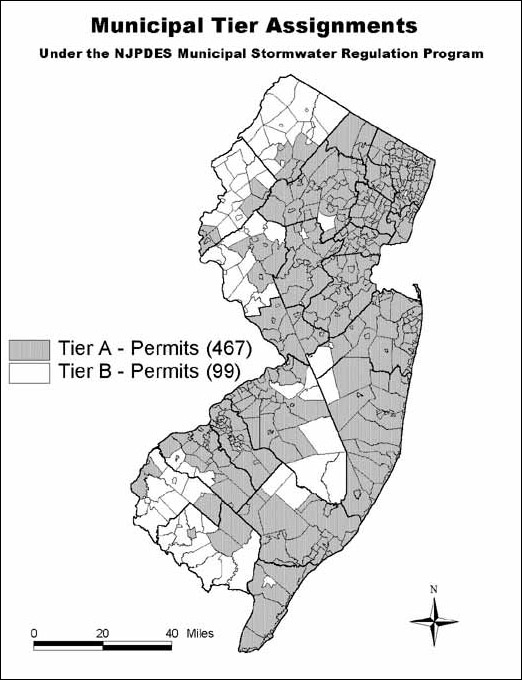 |
| Map. Image: Courtesy NJ DEP Division Of Water Quality |
| Index | ![[Next]](../../../images/next-red.gif) |
